All about modeling clay

Clay modeling is a favorite hobby of many people. The large number of material varieties on the market allows you to select the ideal raw material for each product you create.
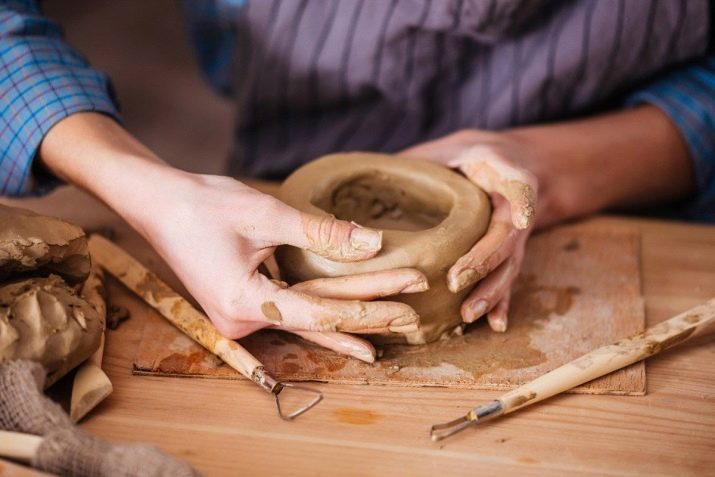
Peculiarities
Modeling clay is a specially processed substance intended for handcraft.
The material is easy to use - making figures will be easy for both adults and children.

Its natural variety is mined from the bowels of the earth, initially arising as a result of erosion of rocks. After carrying out multi-stage processing, a mass is formed that looks like a dough. Polymer clay is created according to a chemical formula in an industrial environment.


Views
Despite the large assortment of clay for modeling on the market, all of it can be classified into polymer and natural.
Polymer
Polymer clay is also known as plastic clay. And with its appearance and properties, it resembles plasticine. The raw material contains PVC, plasticizers and coloring pigments. The advantages of such synthetic clay include a large number of shades, softness and elasticity.
Unfortunately, the material has an unpleasant odor, is often dirty and is expensive.

Polymer clay can be baked and self-hardening. Products made of self-hardening material, reminiscent of air plasticine, do not require heat treatment.
However, the figurine dries for a long time - about 1 centimeter in 24 hours.


Artistic self-hardening clay is usually used to create flat parts. Among its varieties, marshmallow and Japanese clay are especially known, suitable for flower ceramics.
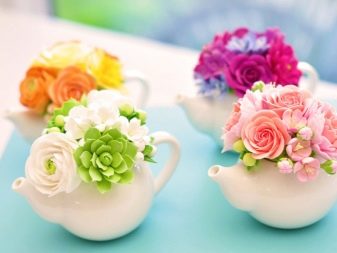

Baked clay needs heat to gain strength. The material often used in sculptural compositions contains plasticizers that improve the characteristics of the mass.


Natural
Natural clay, suitable for making ceramic products, is a material of natural origin. It can be an evacuated mass or a powder mass, which will have to be diluted with water. Natural clay is environmentally friendly, hypoallergenic and very budgetary.


Nevertheless, in its original form, the material has a too hard consistency, as well as a limited number of shades, and therefore requires subsequent painting.

Color spectrum
The coloring of clay products is carried out using special dyes, for example, food. However, clay can be initially sold as either white or colored, especially when it comes to the polymer variety.

Natural clay has four basic shades. White is the most common; after firing it becomes ivory. Heat treatment of the gray mass allows you to create snow-white products. There is also a reddish clay with little green content and a dark brown.

If necessary, a coloring pigment is added to any of them.

Manufacturers
Today, companies from many countries are engaged in the production of clay for modeling. Some of them also supply multi-color kits to the market.
- Fleur products have proven themselves to be excellent Is a white viscous substance, ideal for creating small details, which is referred to as ceramic porcelain. The disadvantage of such raw materials is called its rapid drying in air.

- Clay brand Koh-i-Noor available in white and terracotta shades. The substance is very well processed, but dries quickly and does not tolerate contact with water.
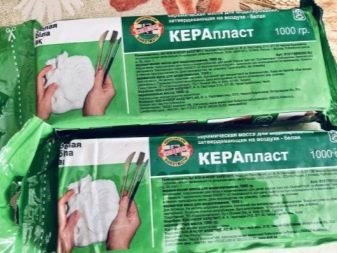

- From the products of Russian manufacturers, products created by the Fantazer company receive good reviews. Clay of this brand is convenient for work, but requires careful observance of storage conditions. It should be mentioned that the products, being hypoallergenic, are suitable for children.

- Fimo Classic Staedtler Baked Clay, presented in numerous shades, is intended for adult creativity.

- Experts also advise paying attention to Polyform Product brand by Sculpey.

Criterias of choice
In order to choose good clay for modeling, it is better to first get acquainted with the manufacturer and with the specifics of his assortment. It is important to check the date of manufacture and expiration date of the material, and also to make sure that the packaging is not damaged. The clay should be natural and non-toxic, especially if it is intended for children. It makes sense to pay attention to the color of the source material, as the finished product often turns out to be too dark.

Each type of crafts requires its own raw materials. For the first acquaintance with the technique, it is better to use the products of the Bake Shop, Sculpey Original or Ezki brands (by the way, it is also suitable for young craftsmen).


For the smallest, as well as people with weak brushes, products from the Fimo Kids and Souffle brands are suitable.


For daily sculpting, it is better to purchase budget clay from Sonnet or Fimo Professional.


When buying, one should focus on the viscosity, plasticity and elasticity of the substance. Adults, and especially those who practice clay professionally, will appreciate the range of brands Super Sculpey, Modena and Prai.

The most versatile are the products of the Premo and Fimo Professional brands. Natural clay is also suitable for artistic modeling, if it has sufficient fat content, weight and the ability to maintain the required shape.

If an oven is required to fix the craft, then you need to find out what temperature the purchased product can withstand.
As a rule, this information is indicated on the packaging: some materials are not afraid to be exposed to 130 degrees, while others melt at 100 degrees.
It is better to start the creative process with polymer clay, and then move on to natural. For small crafts, a material that dries quickly is suitable, and for massive sculptures, on the contrary, characterized by prolonged drying. The advantage of the substance intended for children will be the presence of liquid softeners in the composition.


How to use?
If unused polymer clay remains after sculpting, then you need to do the following: place it in a plastic bag and put it in the refrigerator. In this state, it can be stored for a couple of weeks.
Before placing in the bag, natural clay should be additionally wrapped in a damp cloth.
It is allowed to store it not only in the refrigerator, but also in the underground. Periodically, the bag will have to be opened to ventilate the contents so that mold does not form.
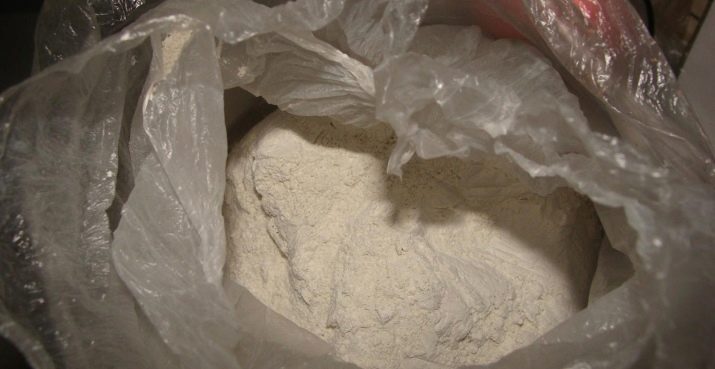
It is more convenient to leave purchased raw materials in the same packaging in which they were sold.
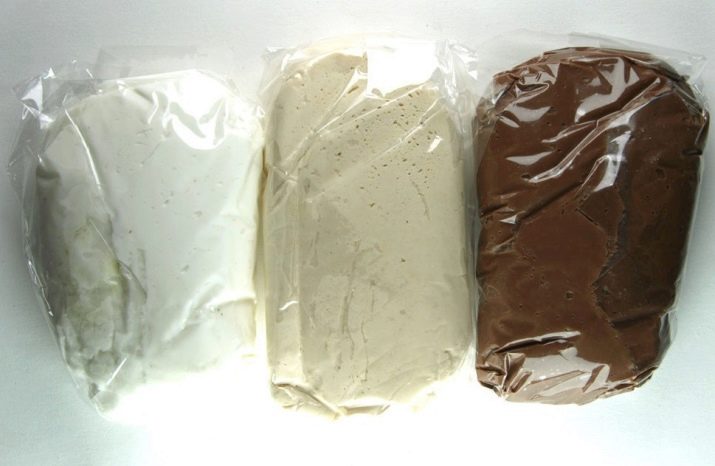
Clay should not be kept in metal containers, as over time it can acquire toxic properties. Also, do not leave the material in water: a few days later it will start to smell unpleasant.
It is important to remember that a homemade mixture containing a large amount of latex glue will crack when stored for a long time.
Elastic material should be handled with special tools. A metal string will allow you to separate small pieces from the total mass, a special knife has a similar ability. Raw materials cannot be rolled out without flat planks and rolling pins made of wood. In addition, stacks and a variety of small parts come in handy to help leave the required prints on the clay surface.


To prepare polymer clay for modeling, knead it thoroughly with warm hands. This action will not only make the material more plastic, but also prevent the appearance of bubbles when heated, which causes deformation of the product. The plasticity of the clay is increased with a special plasticizer, cream, petroleum jelly or ordinary heating. Too sticky mass is mixed with a dry piece or laid out on white paper for a couple of hours.
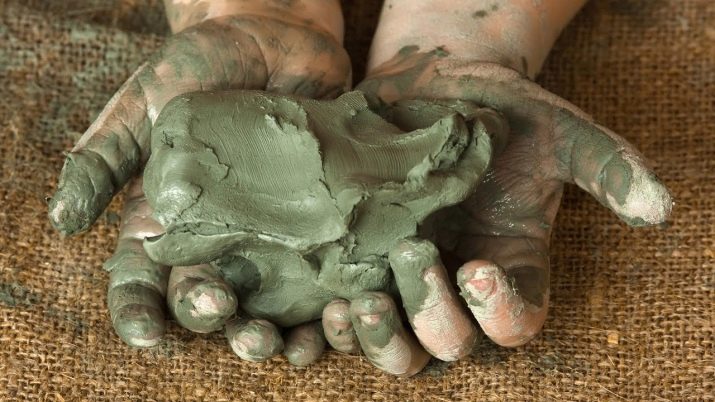
It will be possible to avoid the appearance of prints on the surface if you protect your hands with rubber gloves or, after heat treatment, sand it.
If natural clay has dried up, then it is enough to simply soak it by gradually adding a small amount of water. It is easier to restore polymer clay by using a special paste machine or hand strength.


It should also be mentioned that sometimes natural clay is sold dry, packaged in 3 or 10 kilograms. In this case, it will need to be mixed correctly - pour water in such an amount that the entire mass is covered, and the liquid is absorbed gradually. After the saturated substance is kneaded to the state of a dumpling dough.


How to do it yourself?
At home, clay for modeling can be prepared according to several recipes. In the first case to work, you will need 250 grams of PVA glue, the same amount of corn starch, a tablespoon of petroleum jelly and a couple of tablespoons of lemon juice.
In addition, cling film and hand cream are indispensable.

The process begins with the fact that all the main ingredients are mixed and removed for 30 seconds in a microwave oven, in which the maximum possible temperature is preset. The substance is released from the film formed on the surface and is mixed.


A wooden board is coated with hand cream, after which the mass is kneaded directly on it for 10 minutes. The resulting clay-like mass is first transferred to a paper towel, and when the liquid disappears, it is wrapped in a thin film and put into the refrigerator.


Second recipe involves a combination of 100 grams of potato starch, 100 milliliters of PVA glue, a couple of teaspoons of natural oil and a tablespoon of fat cream.

Having put on gloves before work, it is necessary to warm the glass in a water bath, and then fill it in turn with glue, cream and oil. The ingredients are mixed until smooth, supplemented with starch, and the procedure is repeated. With constant stirring, the substance is heated over low heat until it begins to curdle.
At this time, the board is covered with cling film and coated with a thick cream. After placing homemade clay on it and mixing it for 8 minutes, all that remains is to sculpt a ball, coat it with cream and set it aside for an hour. After the above period, the mass is wrapped in a transparent film and transferred to a cool place.




Finally, for sculpting requiring more durable materials, you will need a glass of wood glue, 100 grams of cornstarch, a tablespoon of stearic acid, 13 grams of citric acid and a small amount of glycerin with petroleum jelly.
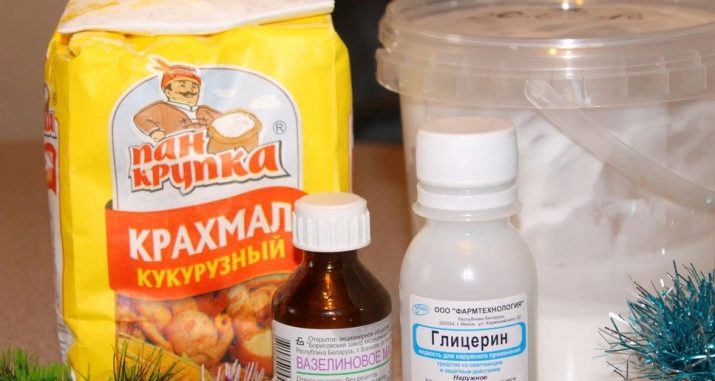
All components, except for starch, are laid out in a saucepan and put on low heat. With constant stirring of the substance, starch is added to it. As soon as the homemade clay begins to move away from the walls, it can be transferred to the prepared surface and kneaded. The cooled mass is covered with cling film and stored in the refrigerator.









